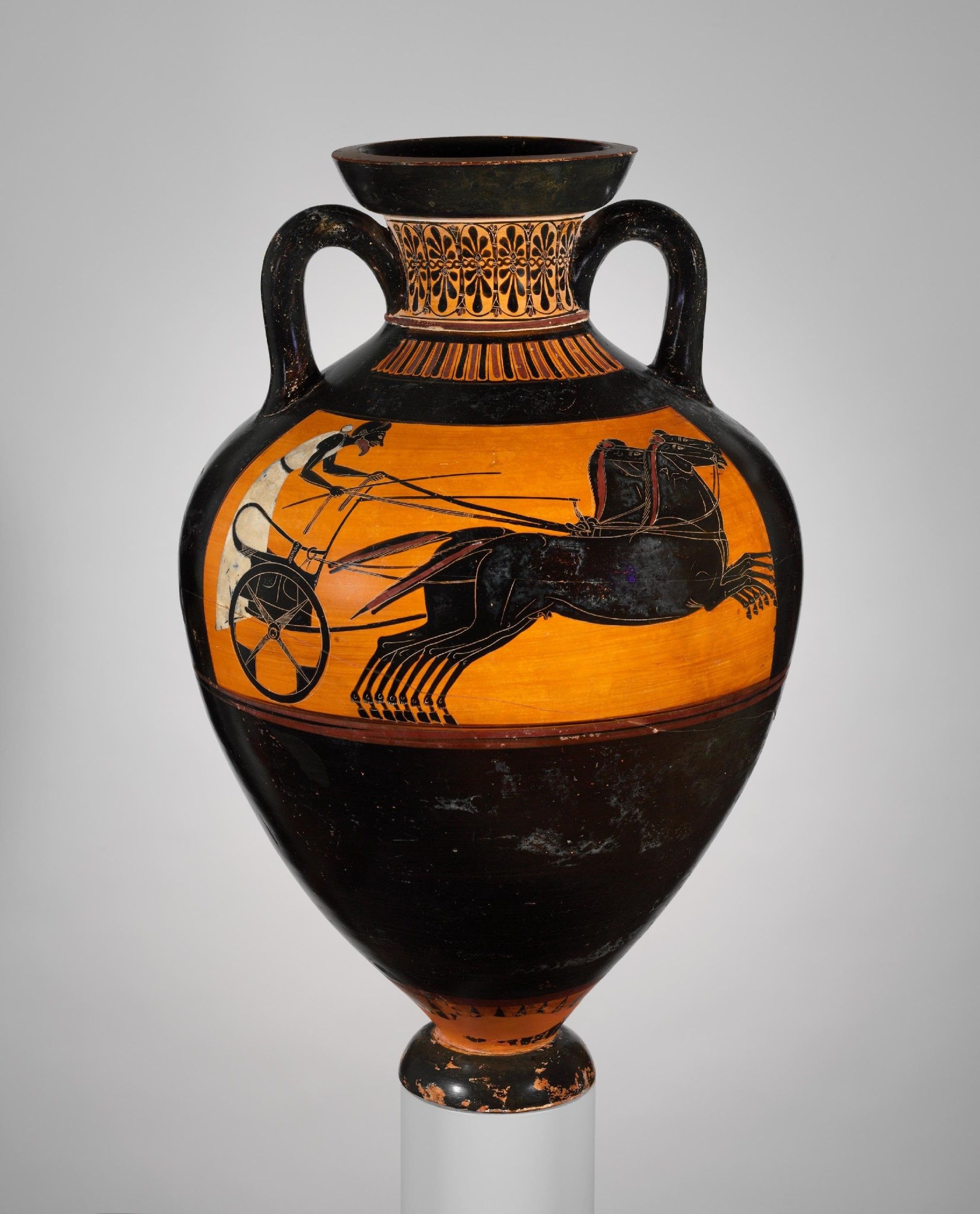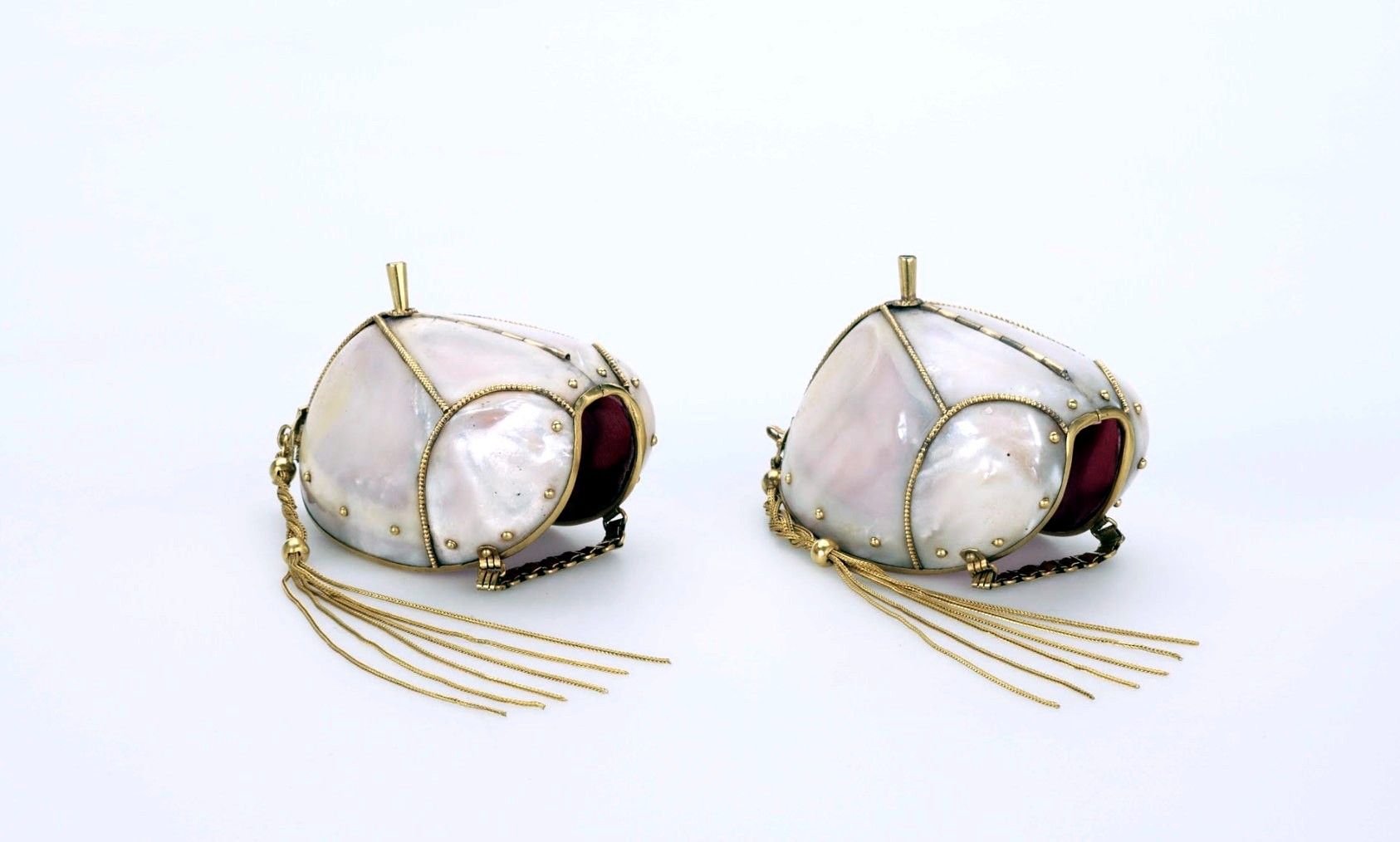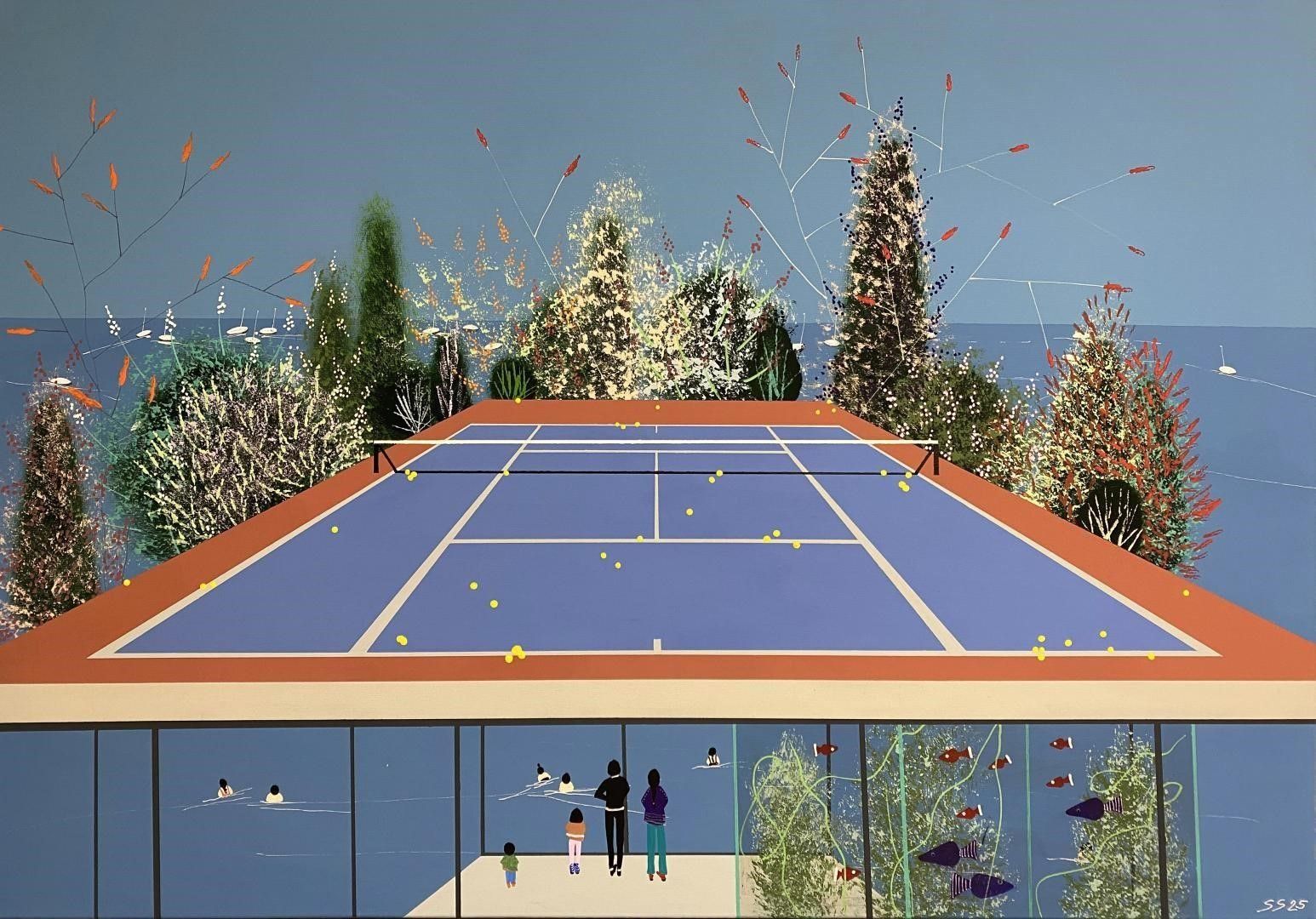Where The World’s First Football Game Began
On view at 3-2-1 Qatar Olympic and Sports Museum, a 1959 ‘Boxing Glove' signed by Cassius Clay — the great Muhammad Ali. Producer: Draper and Maynard Sporting Goods Factory. Production place: United States of America. Material: Leather, Textile, Fibre. Technique: Stitching, Stuffing, Handwriting. Dimensions: 26 × 19 × 11.5 cm. Part of the distinguished collection of 3-2-1 Qatar Olympic and Sports Museum.
So who kicked the first ball? There are many stories about the origin of the beloved football, some even crediting the simple act of kicking a round pebble out of the way as the inspiration behind it.
And indeed, there have been ball games across many cultures throughout history, but the earliest known game resembling football is the ancient Chinese game Cuju, literally meaning ‘kick the ball’, and dating back to 200 BCE.
Ball games kept evolving across various cultures — including various types of rubber ball games played across ancient Mesoamerica that the Spanish encountered when they landed in the New World — until the 1800s when it became the current one beloved by people the world over.
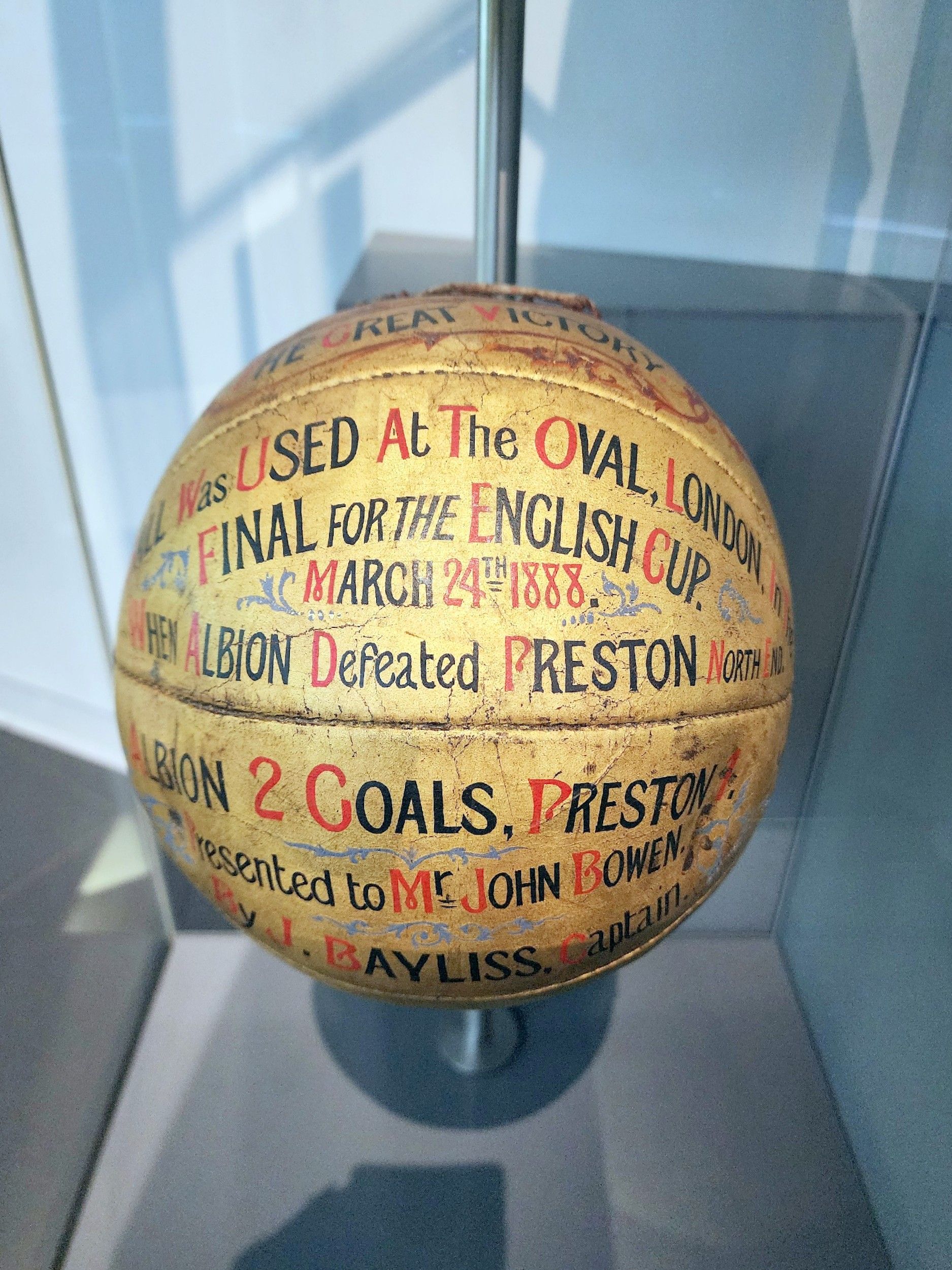
This football, on display at 3-2-1 Qatar Olympic and Sports Museum’s Global History of Sport gallery, was used in the 1888 FA Cup final between West Bromwich Albion – fondly known to fans as ‘The Baggies’ – and Preston North End, with the former taking the cup 2–1, England. Part of the distinguished collection of 3-2-1 Qatar Olympic and Sports Museum.
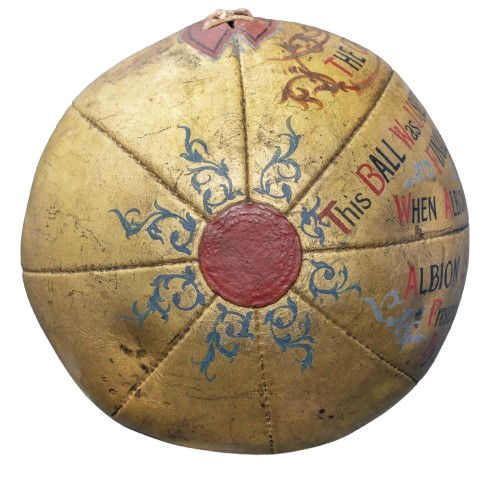
The 1888 FA Cup final match ball features intricate designs in various colours, decorating the entire exterior. Photo: Courtesy of 3-2-1 Qatar Olympic and Sports Museum.
From tracking the use of stone then rubber then wood elements to create sports gear and games, all the way to admiring the various forms of crowns and medals of sports champions, there are hundreds of wonderful artifacts and experiences to explore at the dynamic 3-2-1 Qatar Olympic and Sports Museum.
One can spend a whole day roaming the seven galleries of the museum, and barely scratch the surface of the countless inspiring stories and the historic trove of sports-related memorabilia and artifacts owned (or signed) by iconic figures that shaped sports in one way or another.
One gets to re-meet legendary sports figures in every field: Pelé in football, Michael Schumacher in F1, Muhammad Ali in boxing, Michael Jordan in basketball, Serena Williams in tennis, and many more from across the world. There are special sections for the Arab athletes like Olympics winners Nawal El Moutawakel from Morocco — the first Arab, African and Muslim woman to win the gold in 1984 in 400 meters hurdles event — and weightlifter Fares Ibrahim (the first Qatari to take the gold), and many others who are worth discovering and championing.
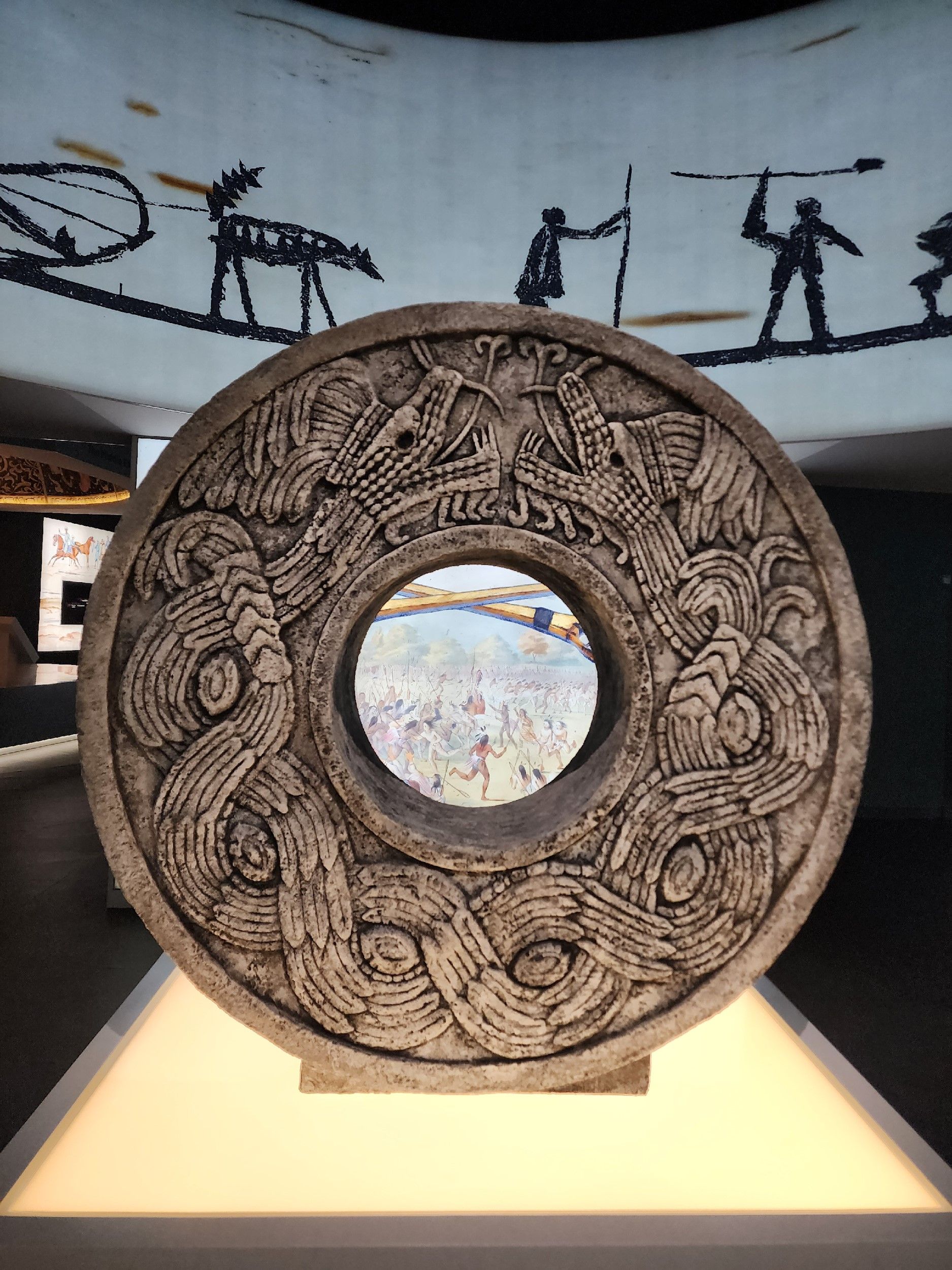
Reconstructed Mesoamerican ball game hoop, Maya culture, Mexico, 600-1200 CE. This stone hoop is decorated with two feathered serpents, and the rubber ball would be directed through it. Part of the distinguished collection of 3-2-1 Qatar Olympic and Sports Museum. Photo by Rym Al-Ghazal.
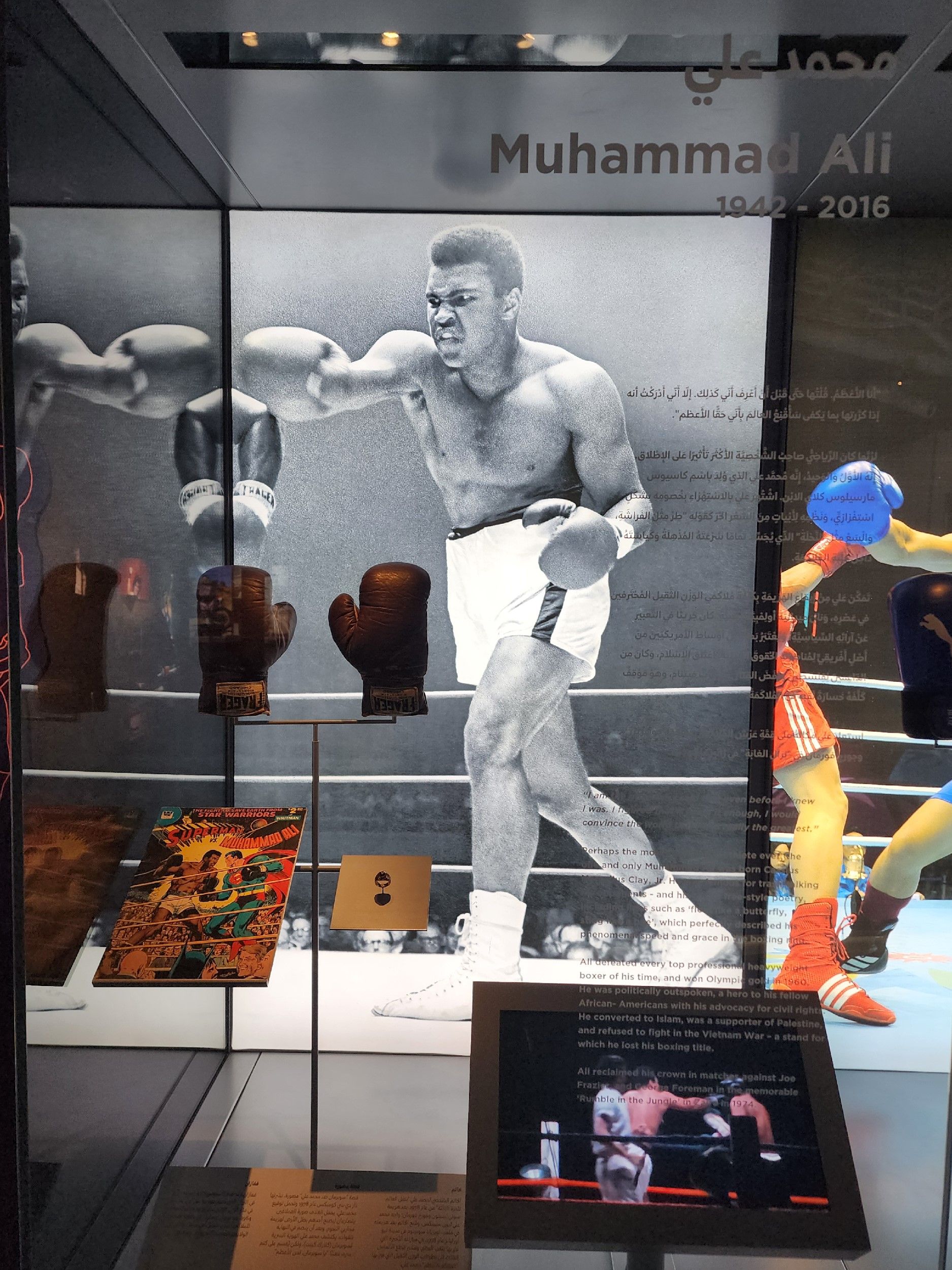
Special sections dedicated to global sports figures, such as this one for the legendary Muhammed Ali, that even includes a unique comic book. See this and more at 3-2-1 Qatar Olympic and Sports Museum. Photo by Rym Al-Ghazal.
“This the first, the biggest and the only sports dedicated museum in the region,” said Abdulla Yousuf Al Mulla, Director of the 3-2-1 Qatar Olympic and Sports Museum.
Speaking to Ithraeyat in an exclusive interview, Al Mulla expressed how the great passion, history and legacy of sports — both within Qatar and around the world — is captured in this impressive museum of 205,000 square feet.
It is a cylindrical, glass-skinned structure, inspired by the five interlaced rings emblematic of the Olympic Games, that fits snugly around the curved side of the almost 50 year-old Khalifa International Stadium
“Sports unites people from around the world and from all cultures,” he said. “Here there is something for anyone who loves sports, whether one loves ancient sports or the Olympics, where we have original items including the torches that were carried in the Summer and Winter Olympics from 1936 onwards.”
Indeed, one of the most memorable halls in the museum is the hall of torches, where these historic Olympics objects of all shapes and sizes appear to be floating in their columns of glass, each carrying an important piece of history.
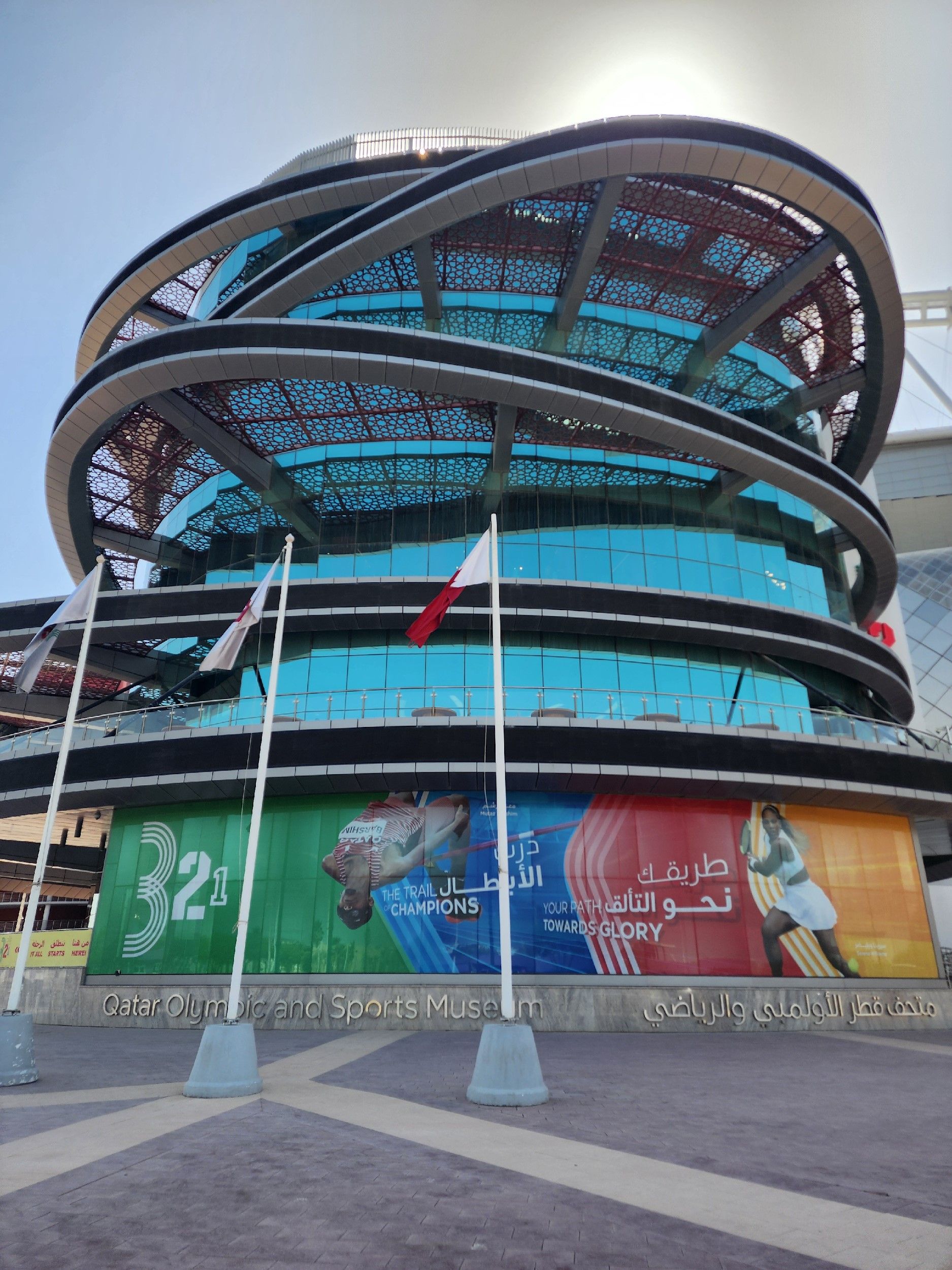
A must addition to Your Bucket List when next visiting Qatar — the impressive 3-2-1 Qatar Olympic and Sports Museum, part of Qatar Museums. Photo by Rym Al-Ghazal.
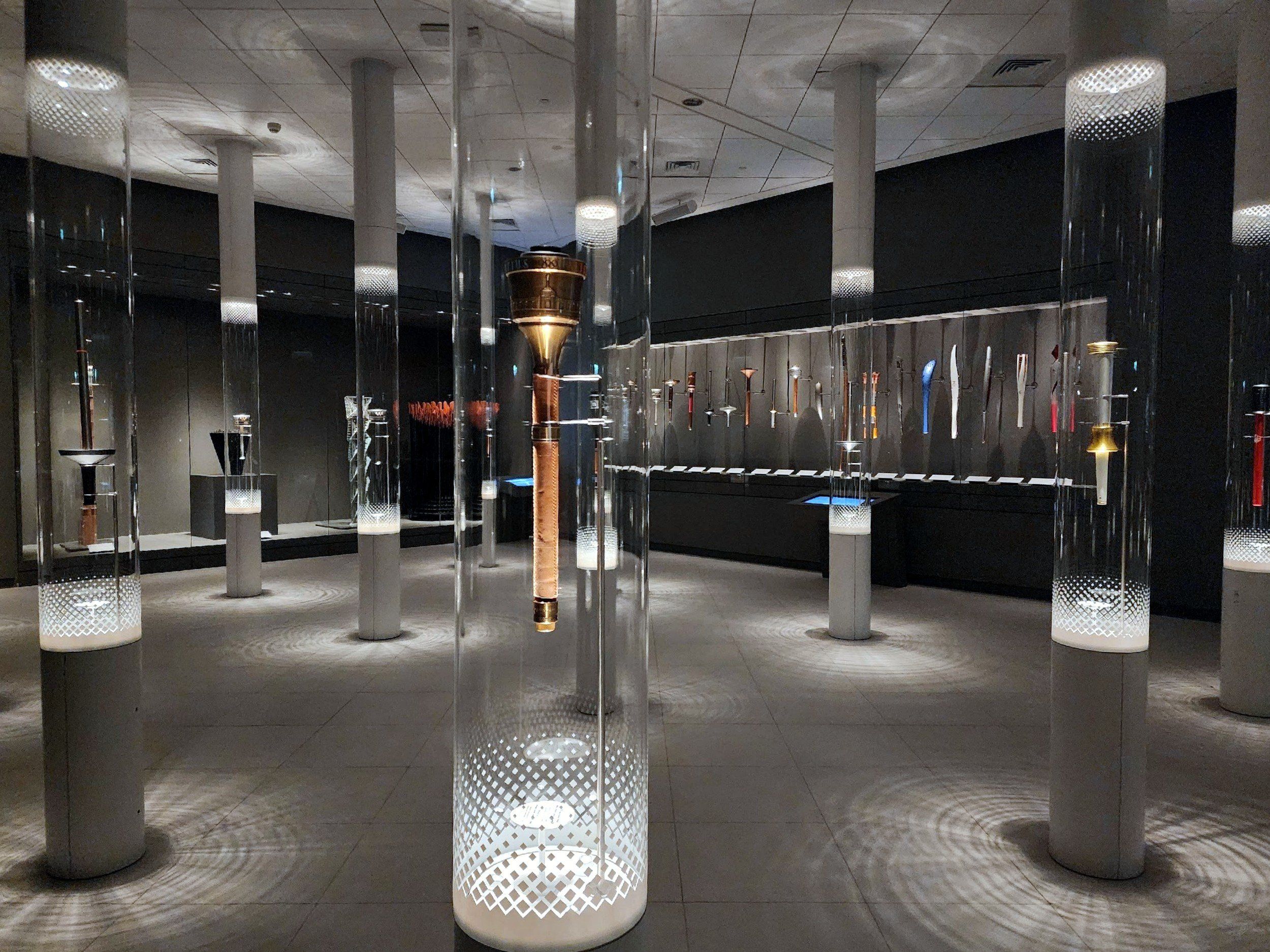
Torches across history on display in the Olympic gallery at the 3-2-1 Qatar Olympic and Sports Museum. Photo by Rym Al-Ghazal.
Sheikha Al Mayassa bint Hamad bin Khalifa Al Thani is the Chairperson of Qatar Museums, while Sheikh Mohammed bin Abdullah bin Mohammed bin Ali Al Thani —a passionate sportsman and mountaineer who was the first Qatari to summit Mount Everest and Ama Dablam, reach the highest mountains of each of the seven continents, and ski to the South Pole — is the president of the sports museum.
“Under her leadership, this museum was envisioned as a dynamic cultural space — one that preserves Qatar’s sporting heritage, showcases global achievements, and inspires future generations to strive for excellence,” said Al Mulla.
“Her Excellency’s vision has guided us to create a space that connects people through shared values.”
And sports will continue to unite us as we compete and celebrate and sometimes leave defeated to try again and again, to win for the self and for the nation.
To visit the 3-2-1 Qatar Olympic and Sports Museum, please click here. It will be worth it!
To read Ithraeyat’s exclusive interview with His Excellency Sheikh Mohammed Bin Abdulla Al Thani, the President of the 3-2-1 Qatar Olympics and Sports Museum, click here.
Explore some interesting elements from the museum’s collection:
While there was no official poster produced for the 1896 Olympic Games in Athens, the cover of the Report of the Games was later adopted for this purpose. Interesting note: The young female figure is shown dressed in an outfit dating to the end of the 1800s Athens, holding a branch and an olive wreath, a reference to the fact that at the ancient Olympics, the winner of each event was crowned with an olive wreath. Part of the distinguished collection of 3-2-1 Qatar Olympic and Sports Museum.
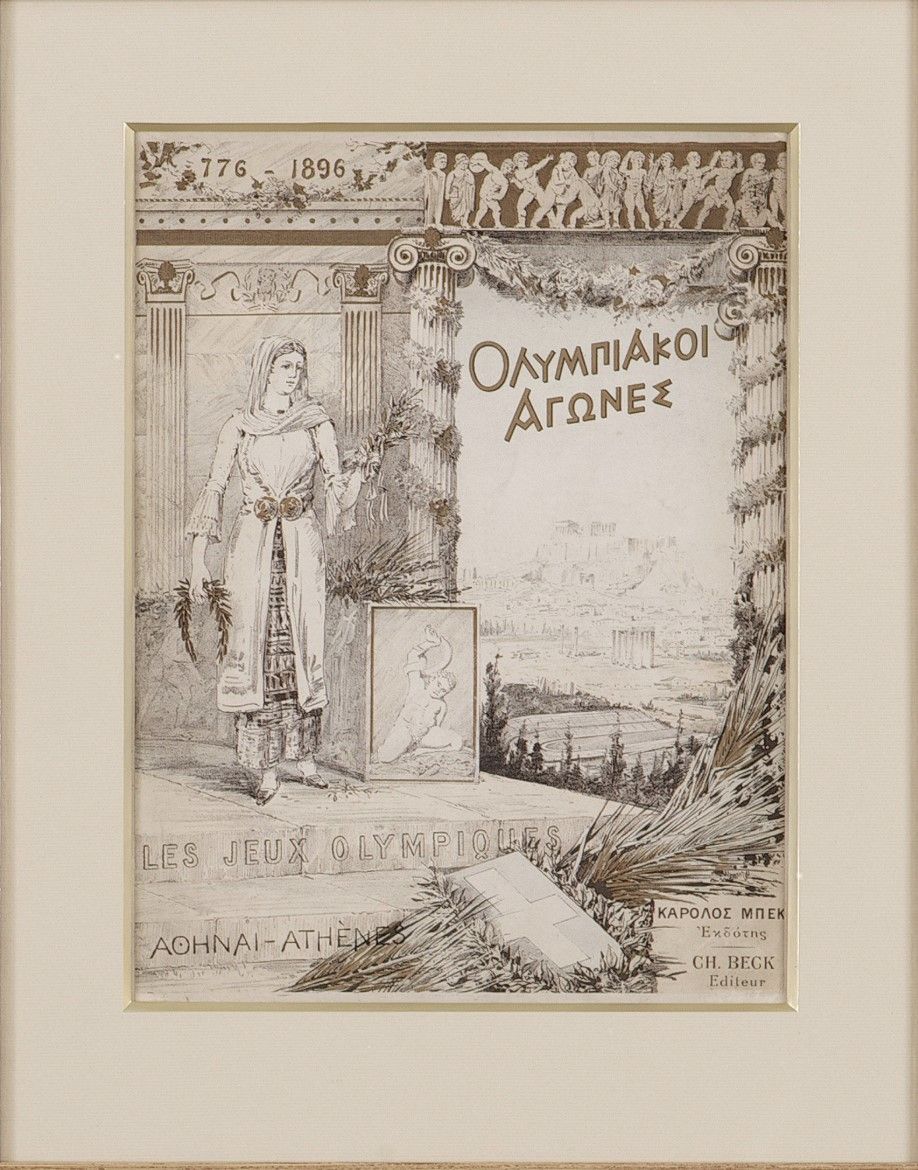
Athens 1896 Olympic Poster. Publisher: Charles Beck. Date: 1896 Period: 19th century CE. Material: Paper, Ink, Textile. Technique: Printing. Dimensions: 34.2 × 25.6 cm.
Moscow 1980 Olympic Mascot ‘Misha’. Designer: Victor A. Chizhikov.
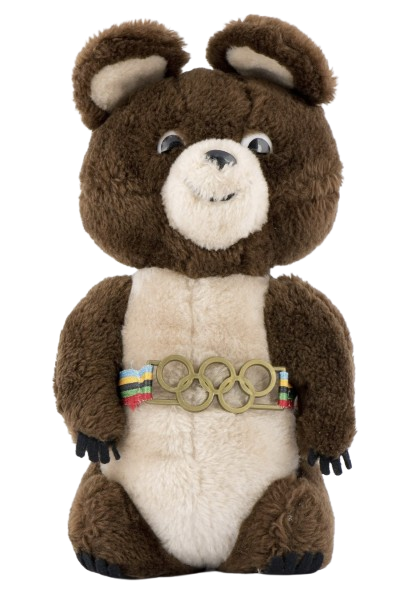
Moscow 1980 Olympic Mascot ‘Misha’. Designer: Victor A. Chizhikov. Production place: Union of Soviet Socialist Republics.
Date: 1980. Period: 20th century CE. Material: Textile, Wadding, Paper, Plastic. Technique: Sewing, Stuffing. Dimensions: 32 × 17 × 12 cm. Part of the distinguished collection of 3-2-1 Qatar Olympic and Sports Museum.
The 1924 Summer Olympics took place in Paris, which became the first city to host them for a second time (after 1900). They were also the last Olympics organised under the presidency of the father of the modern Olympic Games, Pierre de Coubertin (1896–1925).Part of the distinguished collection of 3-2-1 Qatar Olympic and Sports Museum.
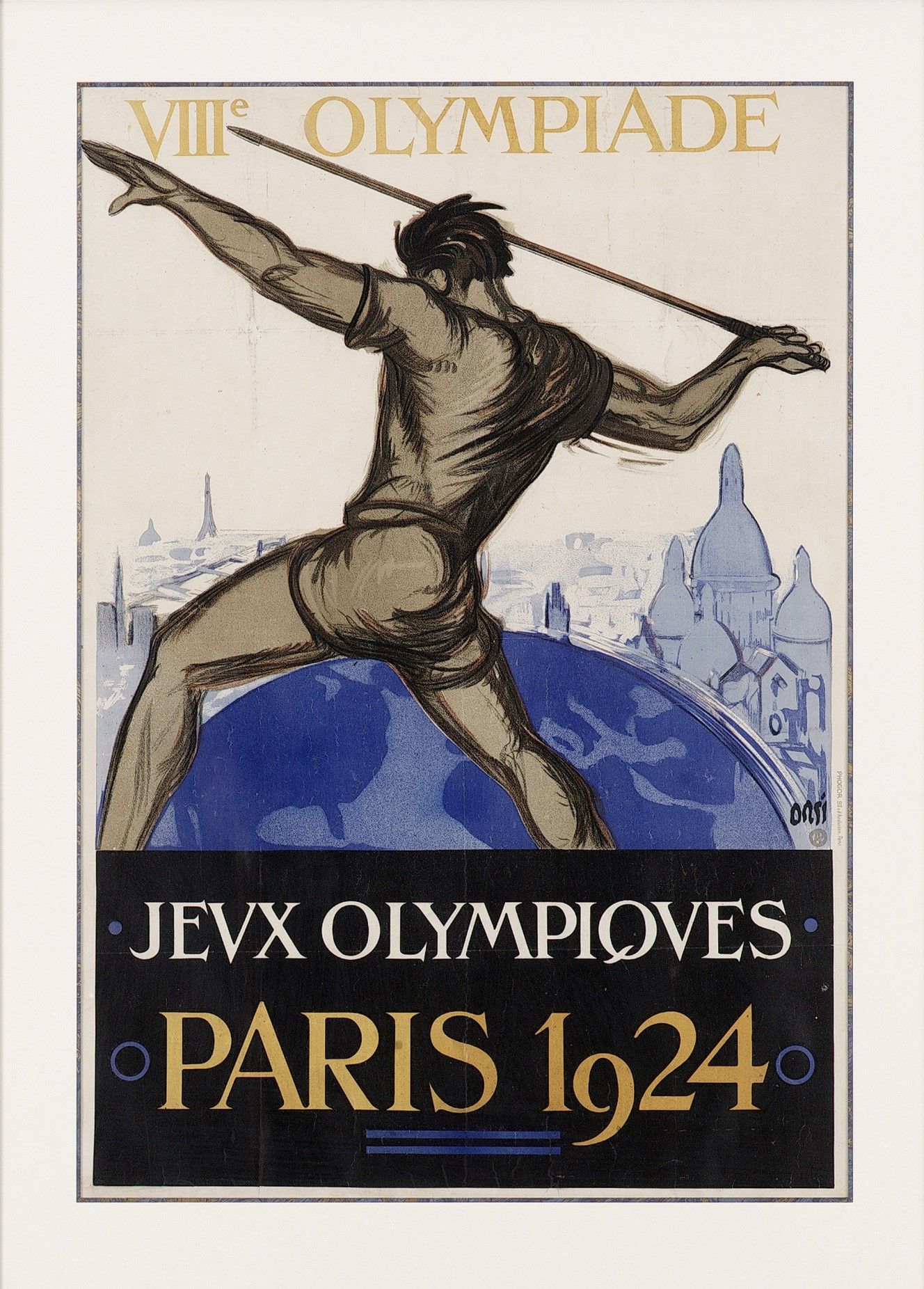
Paris 1924 Olympic Poster. Printer: Rhogor. Artist: Italo Orsi. Production place: Paris. Date: 1924. Period: 20th century CE. Material: Paper. Technique: Printing. Dimensions: 113 × 75.6 × 0.1 cm
At the 1988 Winter Olympics in Calgary, Canada, two mascots were adopted for the first time. ‘Hidy’ and ‘Howdy’ were twins; the female and male version of a polar bear, a native mammal of Canada.
The names of the mascots were chosen after a public competition. ‘Howdy’ is short for “how do you do”, a welcoming North American greeting. His outfit also adopts western Canadian culture. Part of the distinguished collection of 3-2-1 Qatar Olympic and Sports Museum.
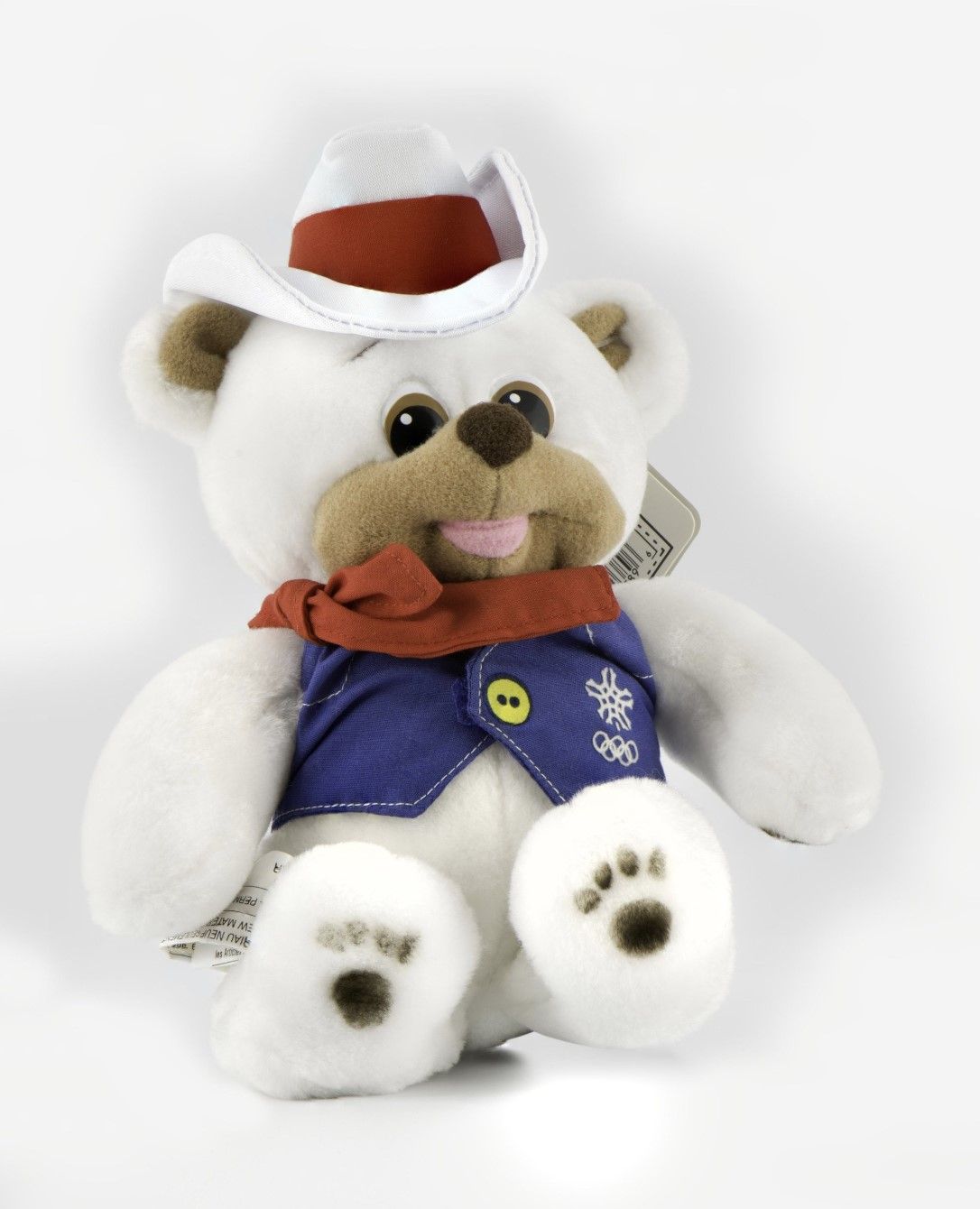
Calgary 1988 Winter Olympics Mascot ‘Howdy.’ Designer: Sheila Scott. Date: 1988. Period: 20th century CE. Material: Textile, Plastic, Velcro, Wadding, Paper. Technique: Sewing, Printing, Stuffing. Dimensions: 21.5 × 17 × 14.5 cm.
